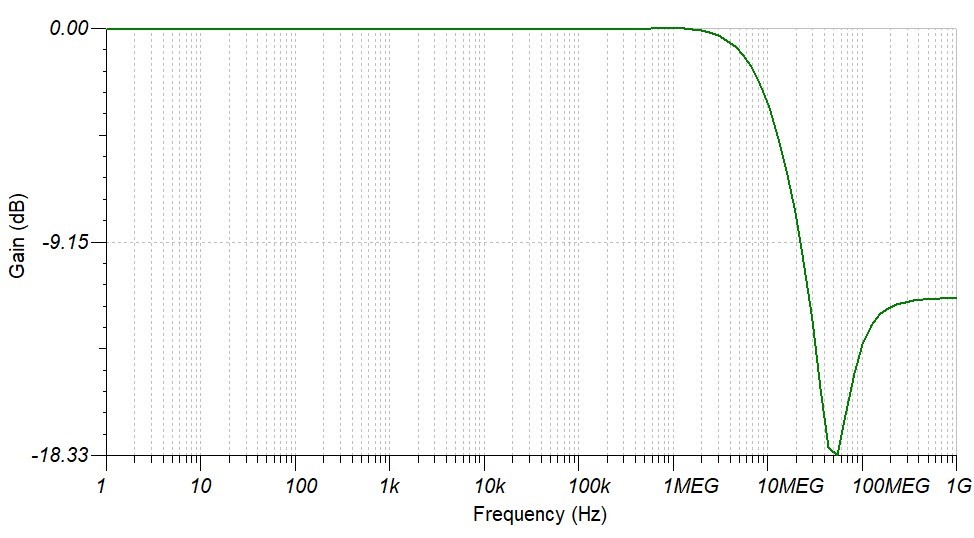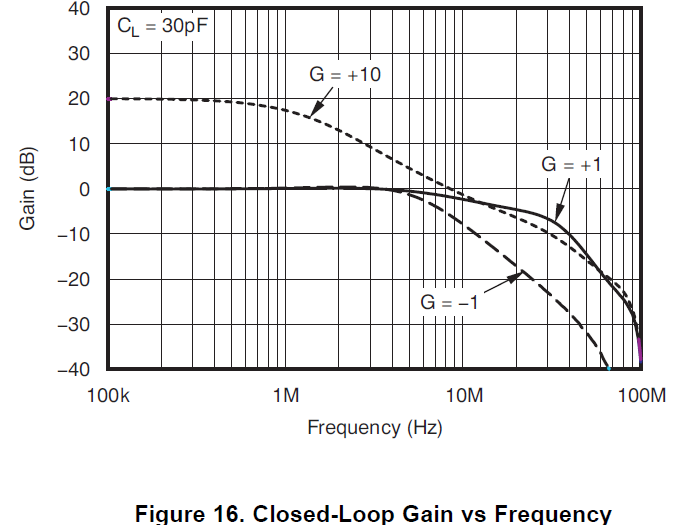Other Parts Discussed in Thread: TINA-TI,
Hello Team,
can you explain why the simulation is not matching the data sheet, please?
What do I need to do to achieve the data sheet frequency response, please?
Thanks and Best Regards,
Hans
TINA-TI Simulation for a buffer configuration (Gain = +1):
Data sheet page 11:



